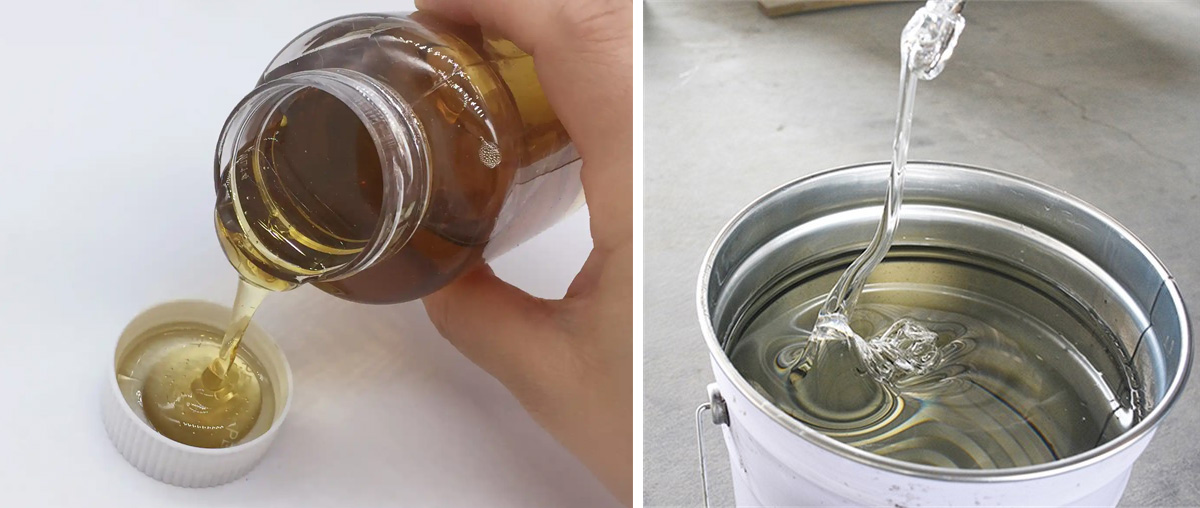Epoxy resin adhesive (referred to as epoxy adhesive or epoxy adhesive) appeared from about 1950, only more than 50 years. But with the mid-20th century, a variety of adhesive theory, as well as adhesive chemistry, adhesive rheology and adhesive damage mechanism and other basic research work in-depth progress, so that the adhesive properties, varieties and applications have made rapid progress. Epoxy resin and its curing system with its unique, excellent performance and new epoxy resin, new curing agent and additives continue to emerge, become a class of important adhesives with excellent performance, many varieties, wide adaptability.
Epoxy resin adhesive in addition to non-polar plastics such as polyolefin bonding is not good, for a variety of metal materials such as aluminum, steel, iron, copper: non-metallic materials such as glass, wood, concrete, etc.: as well as thermosetting plastics such as phenolics, aminos, unsaturated polyester, etc. have excellent adhesive properties, so there is a universal adhesive known as. Epoxy adhesive is a structural adhesive heavy epoxy resin applications.
Classification by curing conditions
Cold curing adhesive (no heat curing adhesive). Also divided into:
- Low temperature curing adhesive, curing temperature <15 ℃;
- Room temperature curing adhesive, curing temperature 15-40 ℃.
- Heat curing adhesive. Can be further divided into:
- Medium temperature curing adhesive, curing temperature about 80-120 ℃;
- High temperature curing adhesive, curing temperature > 150 ℃.
- Other ways of curing adhesive, such as light curing adhesive, wet surface and water curing adhesive, latent curing adhesive.
Epoxy adhesives have the following advantages over other types of adhesives:
- Epoxy resin contains a variety of polar groups and very active epoxy group, thus it has a strong adhesive force with a variety of polar materials such as metal, glass, cement, wood, plastics, etc., especially those with high surface activity, and at the same time the cohesive strength of epoxy cured material is also very large, so its adhesive strength is very high.
- There is basically no low molecular volatiles produced when epoxy resin is cured. The volume shrinkage of the adhesive layer is small, about 1% to 2%, which is one of the varieties with the smallest curing shrinkage in thermosetting resins. After adding filler can be reduced to below 0.2%. The coefficient of linear expansion of the epoxy cured material is also very small. Therefore, the internal stress is small, and has little effect on the bonding strength. In addition, the creep of epoxy cured material is small, so the dimensional stability of the adhesive layer is good.
- There are many varieties of epoxy resins, curing agents and modifiers, which can be reasonably and skillfully formulated to make the adhesive with the required processability (such as fast curing, room temperature curing, low temperature curing, curing in water, low-viscosity, high viscosity, etc.), and with the required use of performance (such as resistance to high temperature, low-temperature, high-strength, high-flexibility, aging resistance, electrical conductivity, magnetic conductivity, thermal conductivity, etc.).
- With a variety of organic substances (monomer, resin, rubber) and inorganic substances (such as fillers, etc.) have good compatibility and reactivity, easy to copolymerization, crosslinking, blending, filling and other modifications to improve the performance of the adhesive layer.
- Good corrosion resistance and dielectric properties. Resistant to acid, alkali, salt, solvents and other media corrosion. Volume resistivity 1013-1016Ω-cm, dielectric strength 16-35kV/mm.
- General-purpose epoxy resins, curing agents and additives have many origins, large production, easy to formulate, can be contact pressure molding, can be applied on a large scale.
How to select epoxy resin
When selecting an epoxy resin, there are many factors to consider, including:
- Use: Can the epoxy be used for general purpose or more industrial applications?
- Working life: How long will the epoxy need to be used before curing?
- Cure Time: How long will it take for the product to cure and be fully cured using the epoxy?
- Temperature: At what temperature will the part operate? If the characteristic is desired, has the selected epoxy been tested for temperature extremes?
Characteristics:
- High thixotropic properties, can be applied to façade construction.
- High environmental safety characteristics (solvent-free curing system).
- High flexibility.
- High bonding strength.
- High electrical insulation.
- Excellent mechanical properties.
- Excellent temperature and water resistance.
- Excellent storage stability, storage time up to 1 year.
Application: For bonding of various metals and non-metals, such as magnets, aluminum alloys, sensors, etc.
Post time: May-07-2025






